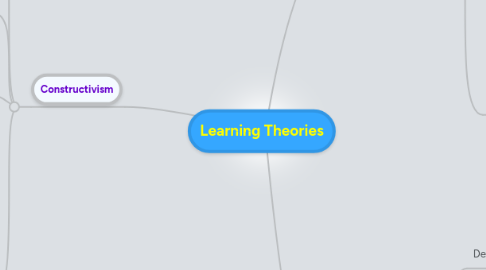
1. Constructivism
1.1. Defination
1.1.1. Construct knowledge with assimilation and accomendation
1.1.2. Knowledge is inseparable by knower
1.1.3. Social constructivism involved from cognitive constructivism
1.1.3.1. "cognitive constructivism" which is about how the individual learner understands things, in terms of developmental stages and learning styles
1.1.3.2. "social constructivism", which emphasises how meanings and understandings grow out of social encounters
1.1.4. http://www.learningandteaching.info/learning/constructivism.htm
1.2. Forcus
1.2.1. Learning is active process that involves personal discoveries
1.3. Application Example
1.3.1. Whole Language Learning Classroom: http://viking.coe.uh.edu/~ichen/ebook/et-it/whole.htm
1.3.2. Some open source forum for software design or information technology: we can show what we know and discuss with others about what we don't know or help others to solve their questions
1.4. Summary
1.4.1. Learning is an active process of constructing knowledge rather than acquiring it
1.4.2. Knowledge is constructed from personal experiences and interpretation of the environment
1.4.3. Learners continuously test their hypothese through social interaction and negotiation
1.4.4. Everybody has their own different interpretation and knowledge construction process
1.4.5. Learners use past experiences to help interpret knowledge so learning is not a blank slate
2. Behaviorism
2.1. Defination
2.1.1. Stimulus & Response
2.1.2. All behaviour caused by external stimuli
2.1.3. Mind process is not important
2.1.4. Teachers
2.1.4.1. Present, Design Practice, Give Feedback when Student respond
2.1.5. Learner
2.1.5.1. Learner starts off with a clean slate. Receive what teacher given, Continously Practice, Give response
2.2. Focus
2.2.1. The knowledge
2.2.2. Obvious Cause and Effect relationship
2.3. Application Example
2.3.1. Teach a dog how to shake hands
2.3.2. Teach little baby how to use spoon to eat
2.4. Outcomes:
2.4.1. Like most traditional teaching methods on Mainland China: just remember A+B=C but 'Why' is not so important.
2.5. Summary
2.5.1. Based on stimulus and response.
2.5.2. The learner is passive and starts off with a clean slate.
2.5.3. Behaviour is shaped through positive/negative reinforcement, both of which will increase probability of behaviour happening again
2.5.4. In contrast, punishment will decrease change of behaviour happening again
2.5.5. Learning is defined as a change in behaviour of the learner
3. Cognitivism
3.1. Defination
3.1.1. Mind as Information Processor
3.1.2. Mind Representations
3.1.3. Teachers
3.1.3.1. Transfer knowledge through cognitive strategies
3.1.4. Learner
3.1.4.1. Remember rules, patterns, strategies
3.2. Focus
3.2.1. Long Term, Short Term, and Working memory
3.3. Application Example
3.3.1. Learning how to drive
3.3.2. Learning how to play tennis
3.4. Outcomes
3.4.1. Nowadays
3.5. Summary
3.5.1. Learner as an information processor
3.5.2. Mind is a 'Black Box' that should be opened and understood
3.5.3. Focuses on inner mental activities and thinking, memory, problem solving need to be explored to see how ppl learn
3.5.4. Knowledge seen as a schema (mental constructions)
3.5.5. Learning as a change in the a learners schemata (ideas, thoughts or the world etc)
